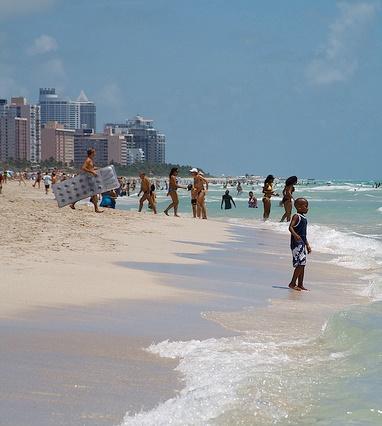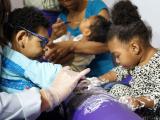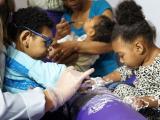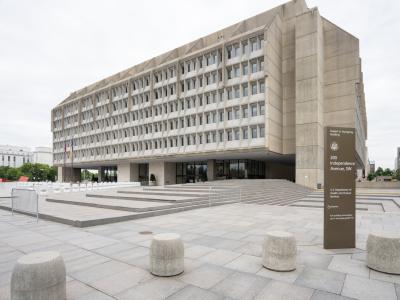Today Florida Gov. Rick Scott said a new area in Miami-Dade County is experiencing local transmission of the Zika virus.
In a news release, Scott said the Florida Department of Health (Florida Health) identified five locally acquired cases of Zika in an area less than 1 square mile in North Miami Beach. Two women and three men have contracted the virus in this area. Three of them live in the area, and the other two worked or visited the neighborhood recently.
"Today's announcement of a new area in Miami of ongoing local transmission of the Zika virus underscores the urgent need for federal funding to combat the Zika virus. It has been two weeks since federal funding to fight Zika was approved by Congress and signed by President Obama. However, Florida has not yet received a dime. We don't need bureaucratic timelines—we need funding now," said Scott.
On Sep 28, Scott requested that the Centers for Disease Control and Prevention (CDC) match Florida's $25 million spent on Zika vaccine research. So far, Scott said Florida's requests for money from the CDC and other federal agencies have been unmet.
More cases in Miami Beach
Yesterday and today Florida Health continued a string of new locally acquired cases of Zika virus, with most of them likely contracted in what's now called the South Miami Beach transmission area.
Today Florida Health confirmed two new local cases. One case is linked to the new area of local transmission, while the other involves a Broward County resident. Officials are investigating where exposure occurred in that case.
Yesterday Florida Health reported six new non-travel–related cases of Zika in Miami-Dade Country, and one case in a non-Florida resident who had recently visited Miami Beach. It appears that four of the six cases in Florida residents were contracted in the South Miami Beach transmission zone.
The updates bring the total number of locally acquired cases in Florida to 155, and in out-of-state residents to 19.
Florida Health also posted three new maps and timelines of the active transmission zones, showing when cases appeared and when spraying occurred. The Wynwood neighborhood timeline, the first area in Miami-Dade County described as an active transmission zone, shows an end date of Sep 19. North and South Miami Beach are still considered ongoing sites of active transmission, meaning two or more cases have been diagnosed in the area recently.
The news comes on the same day the US Agency for International Development, or USAID, announced five different projects that will receive $3.3 million each to research and develop novel ways to combat Zika. The projects include one that uses drones to drop populations of sterile mosquitoes into transmission zones.
"By working together with leading innovators and our partners in government, business, and civil society, we will quickly scale up new innovations to help communities everywhere including the world's most vulnerable to combat Zika and prevent future outbreaks," said Wendy Taylor, director, Center for Accelerating Innovation and Impact at USAID.
More US Zika while WHO reports downward trend
In its weekly Zika update, the CDC said 878 pregnant women in the United States now have Zika, 41 more than last week. US territories report 1,806 pregnant women with the mosquito-borne virus, which is 168 more cases than last week. Puerto Rico is still reporting dozens of infected pregnant women each week.
One more baby with Zika-related birth defects has been born in the United States, raising the total to 23. The number of pregnancy losses involving Zika-related birth defects remained at 5.
As of Oct 12, the CDC reported 3,807 travel-related Zika cases from the continental United States, 95 more than the previous week. The number of cases from US territories increased by 2,753 since last week, bringing the total to 25,871. Almost all of those cases are in Puerto Rico.
So far the United States has 33 (3 more than last week) sexually transmitted Zika cases and no new Zika-related Guillain-Barre syndrome (GBS) cases, leaving that number at 13. US territories have reported 40 Zika-linked GBS cases, 1 more than last week.
In encouraging news, the World Health Organization (WHO) said no new countries or territories reported first cases of Zika virus this week. And no new countries reported Zika-related microcephaly, congenital malformations, or GBS. Seventy-three countries have reported Zika cases, 22 microcephaly, and 12 GBS.
Zika more thermostable than dengue
Finally today, a new study that explains how Zika virus emerged in the Pacific Islands and Latin America provides insight into the virus's staying power. Using genomic analysis, researchers reporting in mBio said the virus is more thermostable than dengue.
"[That] may also contribute to its success as an epidemic virus through its ability to reproduce to higher levels of viremia and to resist inactivation under unfavorable environmental conditions," the authors wrote.
See also:
Oct 13 Gov. Scott news release
Oct 12 Florida Health update
Oct 13 Florida Health update
Oct 13 USAID press release
Oct 13 CDC Zika updates
Oct 13 WHO Zika situation report
Oct 13 mBio study





















